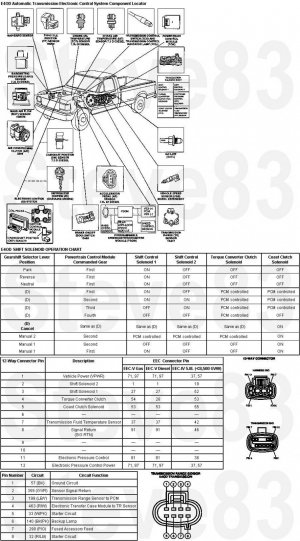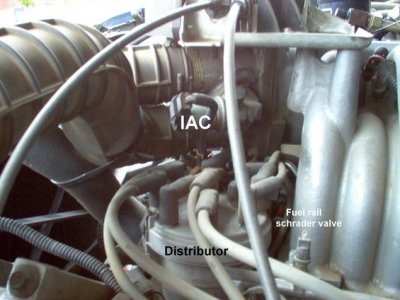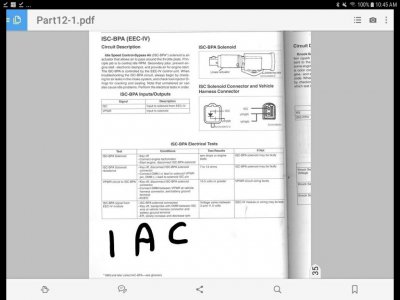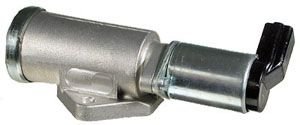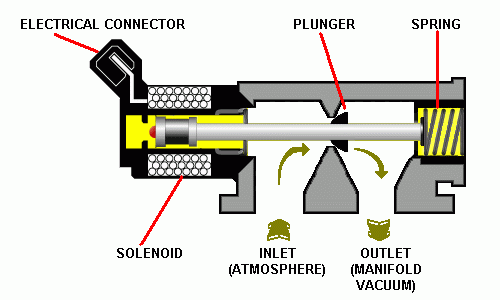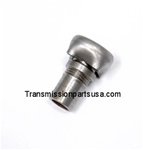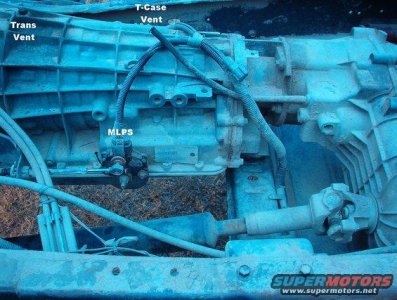Yo Pamm,
Welcome!
E4OD Transmission Control Indicator Light (TCIL) is the LED with an overdrive on/off switch at end of the Transmission shifter stalk; flashing OD light is an indication of a transmission related trouble code in the Powertrain Control Module (PCM).
The transmission control switch is a momentary contact switch. When the switch is pressed, a signal is sent to the powertrain control module (PCM) (12A650). The powertrain control module then energizes the transmission control indicator lamp and the coast clutch solenoid, applying the coast clutch to provide engine braking and cancels fourth gear operation; does it cause the lamp to glow?
The TCIL indicates:
overdrive cancel mode activated (lamp on), The PCM will turn on the TCIL to indicate that the overdrive cancel mode has been selected.
Or electronic pressure control circuit shorted or monitored sensor failure (lamp flashing).
sensor failure (lamp flashing).
Some non internal E4OD POSIBLE PERPETRATORS ARE:
vehicle wiring harness,
powertrain control module,
throttle position sensor,
Transmission Range (TR) sensor,
vehicle speed sensor.
shift linkage is damaged, or misadjusted
Try a Self Test for Diagnostic Trouble Codes (DTC)s by my pal, BroncoJoe19 @
Code Reader
EEC AKA PCM, computer stores the Self-Test program in permanent memory. When activated, Self-Test checks the EEC system by testing memory integrity and processing capability, and verifies that various sensors and actuators are connected and operating properly.
The EEC will tell you what it found out by testing your sensors, and also any stored information it saved from anything that went wrong during the last 40 trips.
The engine temperature must be greater than 50° F for the Key On Engine Off (KOEO) Self-Test and greater than 180° F for the Key On Engine Running (KOER) Self-Test.
Run it around to heat the engine up and shift thru all gears including Reverse. Make sure A/C is off and transmission is in Park (automatic); or in Neutral for a Manual & release clutch. Then turn off engine, all accessories/lights (close driver's door) , etc.
Do KOEO test First. Post Code(s) here according to KOEO & KOER.
A helper can assist you by counting the codes. Some use their smart phones to record them.
BEWARE OF FAN, BELTS, PULLEYS, HOT HOSES, IGNITION HIGH TENSION WIRES, AND ENGINE COMPONENTS
Or ask local mom and dad parts stores if they will test it for you.
Or purchase a coder reader such as Equus 3145 Innova OBD 1 Code Reader for Ford EEC IV Engines at Walmart & most parts stores.
●
ASAP, find out if speed control recall work, if equipped was completed. If you still have concerns about Recalls, please contact the Ford Customer Relationship Center:
US: 800-392-3673 | CA: 800-565-3673
Note: 3673 spells "FORD" on phone keys
For the hearing- or speech-impaired: Please contact the Telecommunication Relay Service by dialing 71
"Summary: ON CERTAIN PICKUP TRUCKS, PASSENGER VEHICLES, SPORT UTILITY VEHICLES, AND MOTOR HOMES CHASSIS, THE SPEED CONTROL DEACTIVATION SWITCH MAY, UNDER CERTAIN CONDITIONS, LEAK INTERNALLY AND THEN
OVERHEAT, SMOKE, OR BURN. THIS COULD RESULT IN AN UNDERHOOD FIRE."
1995 Bronco Dealer Brochure @
1995 Ford Bronco
1995 Bronco Drivetrain, Powertrain Service Manual - Google Drive
The eight Groups found in this manual are:
00 - Service Information
02 - Engine and Transmission Mounting
03 - Engine
05 - Driveline
07 - Transmission
08 - Clutch
09 - Exhaust System
10 - Fuel System
Each Section covers a component or system. The second set of numbers on each page
indicates the Section.
If the vehicle has more than one type of component, such as two types of engines or power
steering systems, alphabetical suffixes are used.
&
1995 Bronco Chassis, Service Manual - Google Drive
To switch between folder list & grid views, click the button to the right of the "DOWNLOAD ALL" button in the upper right corner of the window) by HawkDriver
The twelve Groups found in this manual are:
00 - Service Information
01 - Body
02 - Frame and Mounting (Body)
04 - Suspension
06 - Brake System
11 - Steering System
12 - C,imate Control System
13 - Instrumentation and Warning Systems
14 - Battery and Charging System
15 - Audio Systems
17 - Lighting
18 - Electrical Distribution
Each Section covers a component or system. The second set of numbers on each page
indicates the section.
If the vehicle has more than one type of component, such as two types of engines or power
steering systems, alphabetical suffixes are used.
Haynes Red Manual for 80-95 Bronco & F Series @
Hanes guide 80-96 bko f series.pdf via BroncMom!
Al

